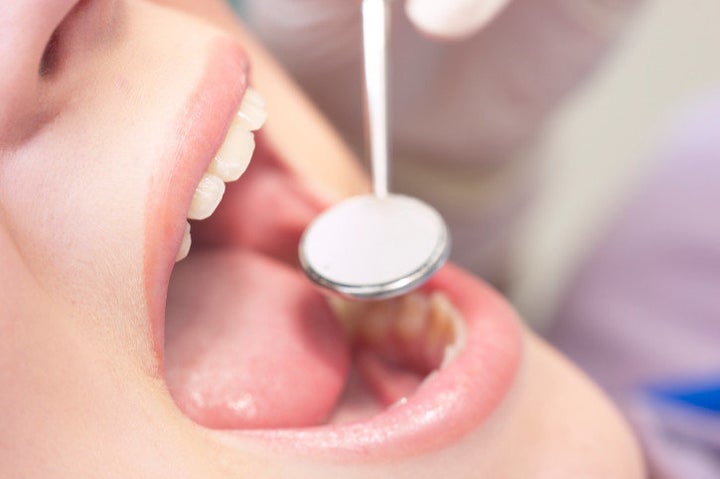
I've talked a lot in this blog about veneers, crowns, bridges, etc., and used words like ceramics, porcelain, glass leucite, etc. But what does all of that really mean?
When I say a porcelain crown, do I mean that fragile substance that has to be kept out of a child's reach because it'll certainly break (when I was a child, it seemed like my aunt was convinced that if I even got within six feet of her porcelain dolls, the mere presence of my 8-year-old body would utterly destroy them all. My aunt was pretty smart, to be honest!)
But yes, the point here is, we see porcelain (and ceramics) as "fragile" substances, so it's fair to ask "why would a dentist use something so fragile on my teeth?" Well, the answer is somewhat two-fold: first of all, the substances are not all that fragile to begin with. We only think of them as "fragile" because of certain products made from them (the above-mentioned dolls, fine china, etc). Yes, a dainty ceramic teacup is (somewhat) fragile. How about a ceramic knife, though?
Secondly, the degree of fragility is relative. Is anything going to withstand, say, a hammer to the teeth? Probably not. Your regular teeth will break, and your porcelain veneers will crack and chip as well. But in terms of regular everyday use (like eating and such), porcelains and ceramics work just fine. In almost all cases, regular chewing and biting isn't going to hurt them. But continually hit your teeth with a piece of steel (which, by the way, you should try not to do), and you may get a chip. To give a good analogy here, think about glass. We use glass as barriers against the elements in our homes, despite it not being able to withstand the neighborhood kid's baseball. But hopefully, that baseball isn't coming for most of us.
Bottom line: Porcelain and ceramic are generally as strong as your regular tooth enamel -- and in many cases, even stronger. As an NYC Cosmetic Dentist, I work with these substances all day, so let's take a look at a few of the different substances that are used to make crowns, bridges and veneers:
•Feldspathic porcelain: One of the first veneer substances, Feldspathic Porcelain Veneers were the overwhelmingly popular choice until about 15 years ago.(1) It utilizes a quartz-based porcelain, and is generally built up, layer upon layer, by a skilled ceramist. Currently, Feldspathic Porcelain has been passed in popularity by other substances, because it's probably the weakest of them all. But many cosmetic dentists still think it looks the best, so Feldspathic Porcelain will sometimes be used when looks trump long-term durability.
•Glass Leucite: Without turning this post into chemistry class, this is a mix of ceramic and glass (2) that is generally used on crowns and bridges. One of the first glass-ceramics used in dentistry, the strength is good, and the addition of glass makes the crown/bridge mimic genuine tooth enamel more accurately.
•Zirconium : Space-age dentistry ... that's what we have here. Zirconium Dioxide is a ceramic byproduct of Zirconium and Oxygen (again, no chemistry class here), and using it results in a very strong crown or bridge -- typically, a feldspathic porcelain will then be applied to the surface for looks (3). Zirconium is also used in fuel rods for nuclear power plants, various aerospace applications where high heat is an issue and even in jewelry (the famous cubic zirconia!)
•Lithium Disilicate: This is another glass ceramic and really illustrates how far dentistry has come in regards to science. The substance is composed of quartz, lithium dioxide, phosphor oxide, alumina, potassium oxide and various other components -- again, space-age stuff here (4). This results in a very strong, life-like crown, veneer or bridge that can withstand the rigors of everyday living.
Now, which of these will your dentist use? Well, that depends. Some dentists are decidedly old-school and will only offer what they learned back in the day. So if your dentist is like that, Feldspathic Porcelain is probably what you are going to get (although you still may get that with a dentist that is up on all of the modern technologies, because many people think it still looks the best).
Really, it's almost like asking an auto mechanic which brand of oil or air filter is best -- 10 mechanics might yield four or five different answers. Or asking five carpenters which brand of tools they prefer -- there are probably four or five valid answers (Makita, Dewalt, Porter-Cable, etc). And you know what? Most guys probably use a few different brands (which is the way I go -- personally, I'll choose what I think is best for each patient and discuss it with them).
So really, there is no right or wrong answer here. All of the porcelain/ceramic choices (actually, they are all technically "ceramics") are valid, because they are all durable -- far more durable than one would think.
Again, a china cup is actually very strong if it's used correctly. Drop it on the floor, and yes, it may break. But if someone fell face-first on the concrete sidewalk, could they chip a tooth? Of course they could! And this is true regardless if it's their natural enamel tooth or a porcelain veneer. Porcelain is actually incredibly strong and resilient -- a good crown could indeed last your lifetime.
I hope this post was informative and helped dispel the myth that porcelain crowns are fragile.
Until next time, keep smiling.
(1)http://www.dentalfind.com/go/porcelain-veneers/article/feldspathic_veneers.html
(2)http://www.schmidhauser.biz/plaintext/downloads/jmsapatiteleucitepaper.pdf
(3)http://en.wikipedia.org/wiki/Zirconium_dioxide
(4)http://www.dentistrytoday.com/dental-materials/971